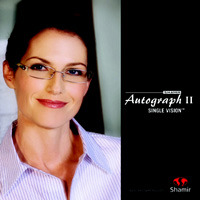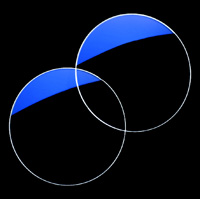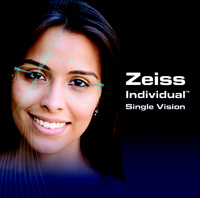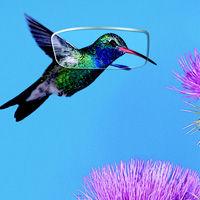By Barry Santini, ABOM

Shamir Autograph II SV
An easy to fit premium SV lens, featuring a wide range of included fitting values. This design, therefore, is very easy to dispense, and does not require or use additional position of wear values (POW), such as pantoscopic tilt, frame curve or vertex distance. The optical “pole” of the lens design is online with the engraved fitting circles. Shamir’s proprietary Eyepoint technology will automatically calculate proper thinning prism, which is often required where the eyepupil is located significantly above a frame’s mechanical center. In this design, ECPs should not pay attention to the lens’s optical center, which can be found with a focimeter. Proper, individual placement of the lens’s engraved circles is the primary fitting consideration. Lens verification is done with a focimeter at the MRP, which lies between the engraved circles. All material indexes, photochromic and polarized options up to 1.67 index are available.
 Rodenstock Impression Mono and Nexyma
Rodenstock Impression Mono and Nexyma
As with the other lenses, Rodenstock’s Premium free-form SV lenses includes designs for distance vision. And, currently unique in the U.S. market, Rodenstock provides a premium FF, SV lens called Nexyma, that is optimized for near vision rather than distance vision. Although just re-entering the U.S. market, Rodenstock FF SV lenses are available with both POW compensation, as well as ECP specified personalization. Availability includes most indexes, photochromic and polarized options. The lens design pole is fitted online with the eyepupil, and is inline with the lens engravings. Focimeter verification is done at the MRP, which is between the engravings. The Nexyma near vision lenses are available for reading distances of either 16 inches or 33 inches. Nexyma lenses are currently available in standard 1.50 index plastic at this time.
 Zeiss Individual SV
Zeiss Individual SV
A sophisticated and personalized premium SV lens, Zeiss Individual allows for ECP input of personalized POW parameters, including VD, Pantoscopic tilt, and frame face form angle. Although the Zeiss Individual optimization program can determine the appropriate base curve required for the above, ECPs have the option to select an alternate base curve within 2 diopters of the program’s chosen default value. The Individual lens MRP is placed 4mm below the pupil. Lens engravings and focimeter verification occur at this MRP, which is between the engravings. Most material indexes up to 1.67 index are available, except Trivex. Of course, polarized and photochromic options are included.
 Essilor 360˚ SV
Essilor 360˚ SV
The Essilor 360˚ single vision lens is an excellent choice for practices concerned with maintaining familiar fitting and processing requirements. The Lens features Essilor’s exclusive W.A.V.E. Technology: WaveFront Advanced Vision Enhancement and design to offer sharper, clearer vision. Included is your choice of Crizal Alize or Crizal Avance with Scotchgard Protector. The lens design pole of 360˚ SV lenses is coincident with the lens’s optical center, ensuring easy fitting. Focimeter verification is done at the optical center. Material choices include standard plastic, 1.50 Transitions, Airwear and 1.74 index.
 Hoya NuLux EP
Hoya NuLux EP
Unique among the current crop of premium FF SV lenses, Hoya NuLux EP are the only lenses featuring FF, DS processing on both the convex side as well as the concave side. Hoya claims this allows superlative lens performance. Fitting is done with the lens design pole placed in front of the eyepupil, and is defined by engraved circles in the same position. Focimeter verification is done at the MRP, which is between the engraved circles. Material choices include 1.67, 1.67 photochromic and 1.70 index.
It is important to note that some premium FF SV lenses can accommodate frame wrap angles up to 15 degrees, which makes them ideal for moderate to stronger Rxs that are mated with more moderate frame wrap angles that exceed the default value range of zero to 5 degrees. ■
—Barry Santini
besantini@fnol.net